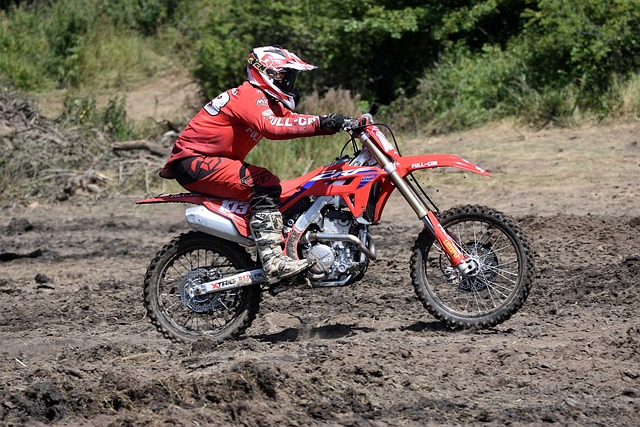In the quest for peak physical performance, many athletes and fitness enthusiasts focus on visible metrics: the number of squats, the weight lifted, or the distance run. Yet a less obvious, but equally vital component of strength training is the body’s internal awareness of motion—known as kinesthesia. By sharpening this sense, athletes can execute movements with greater precision, reduce the risk of injury, and unlock hidden reservoirs of power. This article explores how to cultivate kinesthesia, why it matters for strength training, and practical drills that can be incorporated into everyday workouts.
Understanding Kinesthesia: The Brain’s Body Map
Kinesthesia originates from proprioceptors—sensory receptors located in muscles, tendons, and joint capsules—that relay information about limb position, movement speed, and load to the central nervous system. The brain integrates this data to form a continuous, internal map of the body in space. When kinesthetic awareness is sharp, a lifter can feel the subtle shift of a barbell, the angle of a squat depth, or the balance required during a single‑leg stance, all without looking at the equipment. This internal feedback loop is especially critical in compound lifts, where complex joint interactions occur simultaneously.
- Joint Position Sense – Detects the exact position of a joint at any moment.
- Muscle Length Sense – Gauges how stretched or contracted a muscle is.
- Force Sense – Perceives the amount of force being applied by a muscle group.
The Link Between Kinesthesia and Strength Gains
Strength training is not merely about muscle size; it is also about neuromuscular coordination. When kinesthetic feedback is deficient, a lifter may unknowingly compensate with poor form, leading to ineffective loading patterns or overloading specific joints. Enhancing kinesthesia encourages a more balanced distribution of force, promotes better motor unit recruitment, and facilitates faster learning of new movements. Studies in sports science have shown that athletes with higher proprioceptive acuity often record higher maximal lifts and lower injury rates, especially in dynamic activities like Olympic weightlifting or powerlifting.
“An athlete who can feel where his arm is in space during a snatch will naturally set the bar at the optimal trajectory, reducing the chance of an elbow flare or a hip overextension,” explains Dr. Elena Ramirez, a sports physiologist.
Practical Kinesthesia Drills for Strength Athletes
Below are drills that target the core proprioceptive pathways without requiring expensive equipment. Integrating these exercises into a weekly routine can yield noticeable improvements in movement quality and strength output.
-
Wall Sit with Controlled Descent
Sit against a wall until the knees form a 90‑degree angle, hold for 30 seconds, then slowly rise back up while counting to four. Focus on the feeling of muscle tension in the quadriceps and the pressure against the wall. This drill enhances joint position sense in the knees and hips.
-
Single‑Leg Romanian Deadlift (Bodyweight)
Stand on one leg, hinge forward at the hips while keeping a neutral spine, and lower the torso until a stretch is felt in the standing leg’s hamstring. Return to standing slowly, emphasizing the sensation of balance and muscle engagement. This movement sharpens balance and improves the feeling of load distribution.
-
Dynamic Balance Walks
Walk in a straight line, placing one foot directly in front of the other, and try to maintain a narrow footfall. As you progress, add a light dumbbell to each hand or a resistance band around the ankles. The key is to stay aware of each foot’s position, which cultivates proprioception in the ankles and hips.
-
Barbell Pause Squats
Perform a squat, pause for two seconds at the bottom, and then rise. The pause forces the lifter to maintain tension and sense the exact depth before initiating the ascent. This drill is especially effective for heavy squat training, where depth control is paramount.
-
Mirror Workouts
If a mirror is available, use it to visually confirm that your joints are aligning correctly. While kinesthesia is internal, the mirror provides an external cue that reinforces the brain’s body map. Over time, the need for visual feedback will diminish as proprioceptive accuracy improves.
Integrating Kinesthesia Into Heavy Lifting Sessions
Once basic proprioceptive drills are comfortable, incorporate kinesthetic focus into heavier lifts. Here are three strategies to embed this awareness without compromising intensity.
- Pre‑Load Sensory Check: Before each set, pause in the starting position and mentally scan for muscle tension, joint angles, and any discomfort. This sets a baseline that the body can return to during the lift.
- Tempo Variation: Slow the eccentric (lowering) phase to 3–4 seconds and the concentric (lifting) phase to 1–2 seconds. The deliberate tempo forces the nervous system to process movement at a slower rate, increasing kinesthetic feedback.
- Mind‑Muscle Connection: As you lift, consciously “feel” which muscles are doing the work. This is especially useful in compound lifts like the bench press, where shoulder and triceps interplay; focusing on the triceps can prevent shoulder compensation.
Recovery and Kinesthesia: The Role of Mobility Work
Adequate mobility is a prerequisite for optimal kinesthetic function. Tight muscles and stiff joints restrict the range of motion, limiting the sensory input the brain can receive. Incorporate mobility sessions such as dynamic stretching, foam rolling, and yoga flow into your weekly schedule. Pay particular attention to areas that frequently show form breakdowns—hips, ankles, shoulders—and maintain a consistent routine to keep the proprioceptive pathways unclogged.
Nutrition and Kinesthetic Performance
While exercise dominates the conversation around kinesthesia, nutrition plays a supportive role. Adequate protein intake fuels muscle repair and growth, which in turn enhances the function of proprioceptors. Omega‑3 fatty acids, found in fatty fish and flaxseed, have anti‑inflammatory properties that keep connective tissues supple. Staying hydrated ensures optimal nerve conduction. A balanced diet that aligns with training demands underpins the neuromuscular system’s ability to process sensory information effectively.
Monitoring Progress: Signs of Improved Kinesthesia
Over time, you’ll notice subtle yet meaningful changes. Here are a few indicators that your kinesthetic training is paying off:
- Greater confidence in lifting heavy weights without compromising form.
- Reduced reliance on external cues such as mirrors or spotters.
- Faster reaction to sudden changes in load or balance during compound movements.
- Lower incidence of joint discomfort or micro‑injuries.
- Ability to maintain proper depth and alignment during high‑volume sessions.
Documenting these observations in a training log helps to reinforce the connection between proprioceptive work and overall performance gains.
Common Pitfalls and How to Avoid Them
A few mistakes can hinder the development of kinesthesia:
- Neglecting Warm‑Ups: Jumping straight into heavy lifts without a proper warm‑up can limit proprioceptive readiness.
- Ignoring Pain Signals: Training through pain can mask proprioceptive deficits that actually indicate injury.
- Overemphasizing Volume: Excessive volume without adequate focus on movement quality can dilute the benefits of proprioceptive drills.
By remaining mindful of these pitfalls, you preserve the integrity of your training plan and maximize the impact of kinesthetic improvements.
Conclusion: A Holistic Path to Strength
Kinesthesia, the sense of body movement, is the invisible backbone of effective strength training. By sharpening proprioceptive awareness, athletes can execute lifts with surgical precision, reduce injury risk, and accelerate strength gains. The combination of simple proprioceptive drills, mindful heavy‑lifting techniques, comprehensive mobility work, and balanced nutrition creates a robust framework for athletes of all levels. Start integrating kinesthetic training today, and feel the difference in every rep, set, and session—because true strength is not only about muscle mass; it’s also about the body’s intimate knowledge of itself.



